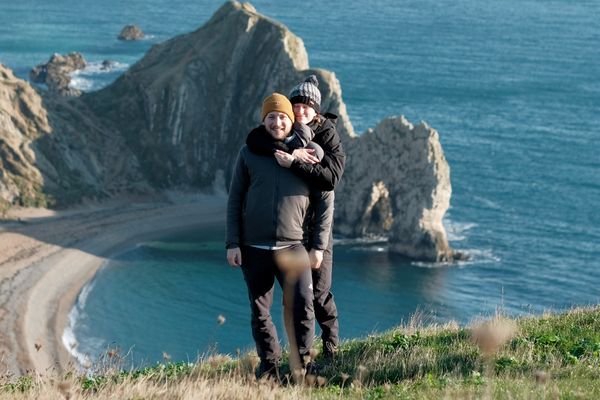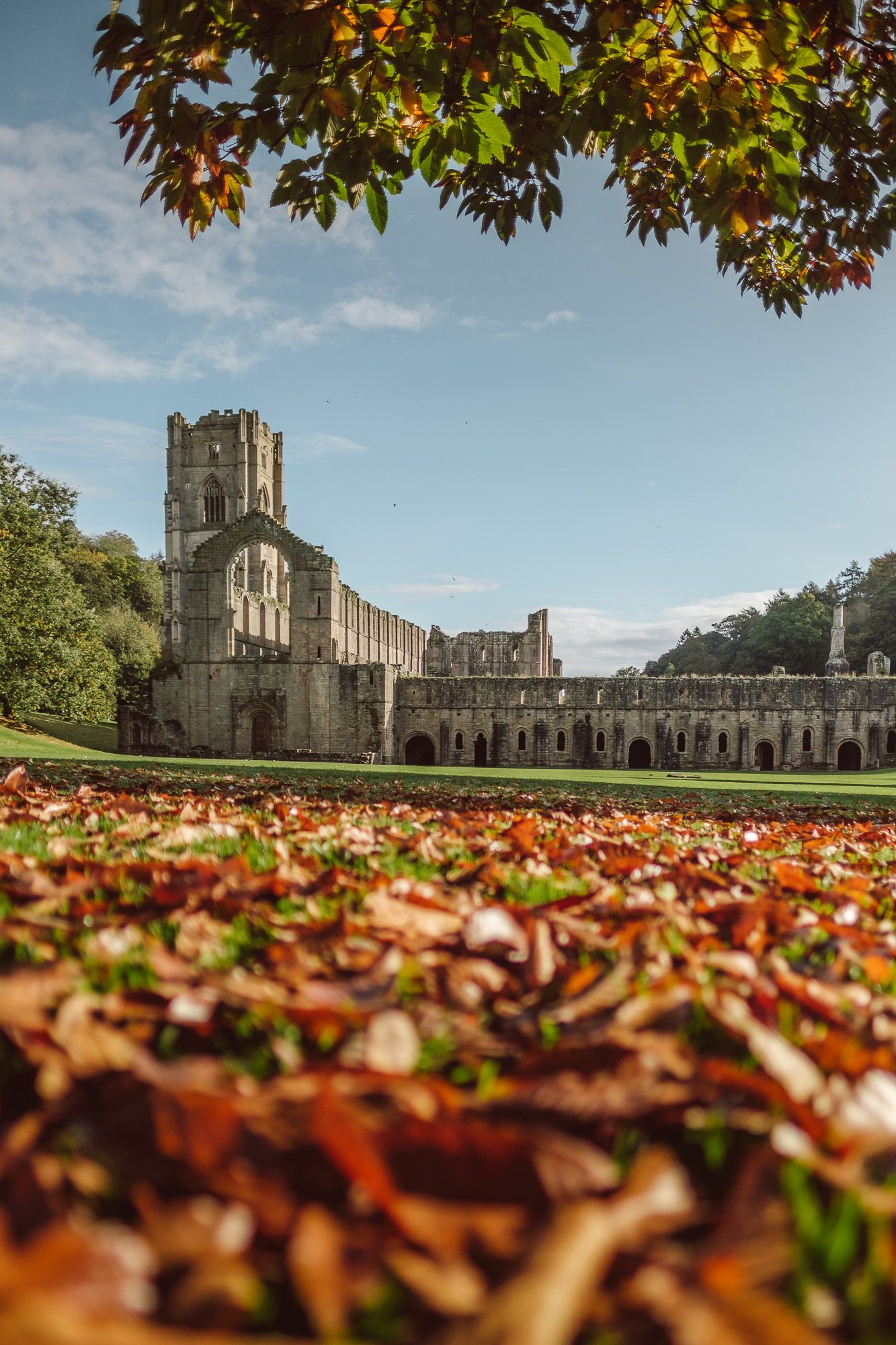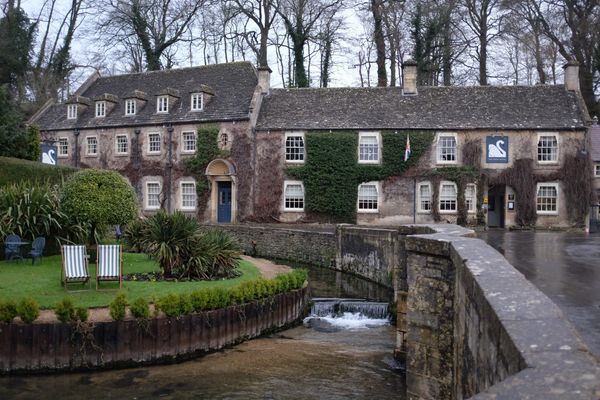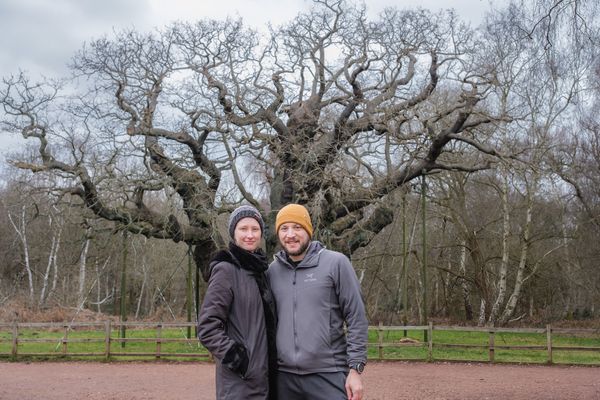We’ve been travelling nomadically full time since January 2018, visiting all corners of the UK. Our pet sitting business takes us all over England and beyond, and when we’re not at a pet sit we take mini breaks in our campervan to explore new places and find new favourite parts of the country. We struggled to pick just 10 stunning spots for this list – there are so many gorgeous places in England that we could go on and on – but here are some of our top places that you need to visit in England, for a quintessentially British taste of all this beautiful country has to offer.
Rye, Sussex
Visiting the East Sussex town of Rye is like stepping back in time. Medieval houses line cobbled streets in the centre, and there are many little alleyways and crooked pathways just waiting to be explored. The Instagram-famous Mermaid Street is particularly postcard-worthy, with its characterful house names and mismatched buildings in a mixture of Georgian and medieval styles. Make sure you visit the Landgate – one of the last remaining gates that was built to defend Rye from invading forces – which you’re able to walk or drive under.
Dartmoor National Park, Devon
This one covers a large area, but we couldn’t pick just one place in Dartmoor! Dartmoor National Park is the largest and highest upland in Southern Britain, meaning it’s best to pack good quality outdoor clothing to visit here – the area sees high levels of rainfall all year around and is exposed to strong winds! Despite the wild weather, it’s simply breathtaking here. The landscape changes drastically the more you explore, from rolling moors and heathland to winding streams and thick forests. There are tors to hike to and a wealth of wildlife to discover – because of its climate and diverse habitats, Dartmoor is home to many rare lichens, butterflies and other insects. No two days are the same on Dartmoor! For a list of our recommended places, check out our Top places to visit in Dartmoor post.
Stow-on-the-Wold, Gloucestershire
Just one of our favourite spots in the Cotswolds, Stow-on-the-Wold is full of hidden gems. Grade I listed St Edward’s Church features a beautifully ornate door, rumoured to have inspired JRR Tolkien’s Doors of Durin in Lord of the Rings. Whether the rumour is true is unknown, but this place is so magical that we can see why it could be! Take your time to explore the town – heading through the network of cobblestone alleyways there are quaint country shops full of treasures tucked away along the winding streets. We highly recommend stopping in at Lucy’s Tea Room for a quintessentially British cup of tea and spot of lunch – if you can nab the window seat you’ll be able to see the historic village stocks, or on a sunny day there’s outdoor seating in a courtyard behind the cafe. For more Cotswolds highlights, head to our 48 hours in the Cotswolds post.
Whinlatter Forest, Cumbria
We’ve hiked the trails at gorgeous Whinlatter Forest a few times now, but it never gets old! There are many different routes to take here, ranging from 1.6km-8km in distance, but our favourite is the Seat How Summit trail. This circular walk takes you along the damp, mossy paths through the trees before reaching the summit of Seat How. Here you’ll be rewarded with spectacular views over Derwentwater, as well as the Skiddaw and Helvellyn mountain ranges – some of the highest in England. The forest all around dampens any sound, so you can enjoy a tranquil walk through nature with dew-covered cobwebs, bright red toadstools and the smell of pine hanging in the air as you hike.
Clovelly, Devon
Another Devon gem, this time on the coast. Clovelly truly feels like it’s frozen in time, as it has been immaculately maintained and the history of the village preserved. The main street in Clovelly is on a 20% gradient, so the village has resident donkeys to bring supplies up and down the cobbled road where it’s too steep and narrow for vehicle traffic. The characterful cottages are the real highlight, as they have been kept in the traditional 14th century style of the fishing village for hundreds of years, and many homes have been decorated with items nodding to the village’s fishing history. Be sure to spend some time at the harbour, where traditional Grade Il listed fishing cottages line the water and you can stop for a drink at the Red Lion Hotel. To find out more, head to our Visiting Clovelly post.
Stratford-Upon-Avon, Warwickshire
Ask anyone to name a famous historical person synonymous with England, and William Shakespeare’s name is bound to crop up. Stratford-Upon-Avon is the birth place and final resting place of the playwright and poet, and there are many places memorialising his life and work scattered throughout the town. Visitors can discover Shakespeare’s birthplace at the half-timbered Tudor family home, visit Shakespeare’s Schoolroom and Guildhall where he spent his school years, and even make a pilgrimage along the river Avon to the Holy Trinity Church where Shakespeare is buried. The carefully preserved Tudor buildings and landmarks here, juxtaposed with modern shops and cars parked along the quaint streets, create a dizzying blended atmosphere that only fuels your curiosity as you make your way through the town. Look out for tiny treasures like a front door knocker in the shape of a Shakespeare bust, or a gold hand and quill on a shop sign – there are Shakespearian delights around every corner!
Fountains Abbey, Yorkshire
This National Trust property requires a fee to enter the grounds, but if you only visit one National Trust property, make it this one! We’ve visited countless National Trust properties, estates and land over the years but we both agree this one is our absolute favourite. Fountains Abbey is one of the largest and best preserved ruined Cistercian monasteries in England. Once home to devout monks, the colossal ruins that remain provide a glimpse into the past and make for unique photography points in the silhouettes of the window frames. Visitors can walk right amongst the ruins, and there are paths around the Studley Royal Georgian water garden behind the Abbey to enjoy. Elegant ornamental lakes, temples and canals provide many places to simply sit and appreciate the tranquility of your surroundings – be sure to look back for a picturesque view of the Abbey from afar. For more Yorkshire highlights, head to our 8 days out in Yorkshire post.
Wells-Next-The-Sea beach, Norfolk
One of our favourite beaches in all of England, Wells-Next-the-Sea has a little bit of everything! Stepping onto the sprawling sands you’re greeted with the sight of around 200 beach huts separating the forest from the beach, in a rainbow of colours and designs. The beach itself is mostly flat, save for the dunes towards the forest, and stretches for miles into the distance. On a fine day you may be able to spot seals lounging by the water’s edge! On inclement weather days we like to head over the soft dunes and into the forest, where the trees are so dense that the air is completely still and silent. Rough pathways criss-cross through the maze of twisted trees, making for a fairytale-esque walk adjacent to the beach. If you tread lightly, a wild deer may spring across the path as you walk! For information on visiting Wells and the best walking routes, head to our Dog walking in Holkham and Wells post.
Cirencester, Gloucestershire
We just couldn’t resist adding another Cotswolds spot to this list! Cirencester is the largest town in the Cotswolds, with a mix of traditional country shops and high street chain stores. It’s wonderful to spend a day here walking along the pristine streets, visiting the independent shops, admiring the beautiful shopfronts, blooming flowers and famous Cotswolds brickwork. There’s so much pride taken in the appearance of the town, it’s almost regal. There are old-fashioned shop signs still in place, and decorative bunting that gives an extra quaint touch to the town, as well as SO many colourful floral displays everywhere! The added touch of classic cars parked outside homes that are vibrant with twisting wisteria and blossom, makes this town a truly archetypal English place to visit.
Whitby Abbey, Yorkshire
The second Yorkshire Abbey on our list, but for good reason! This 7th century ruined monastery inspired Bram Stoker’s novel Dracula, and visiting here it’s easy to see why. The Gothic architecture creates ominous shadows and invites exploration into its rich history. On the West side of the Abbey, visitors can view Whitby from above as well as a sweeping view out to sea. We highly recommend visiting around sunset to see the Abbey in all its dramatic glory, the stark silhouette of the Gothic ruins adding to the eerie atmosphere at dusk, with the orange glow of sunset lighting up the chequered stones. For more Yorkshire highlights, head to our 8 days out in Yorkshire post.
If you found this post helpful, please consider supporting our blog by donating as little as £1 to our running costs! Thank-you!

We are Chris+Suze

Thank you for reading!
We hope you’ve enjoyed this post! For more posts about great places to visit, head to our blog or follow us on Instagram and Facebook for photos and videos from our travels! Let us know in the comments – have you been to any of these places in England? Or has our post inspired you to go!






